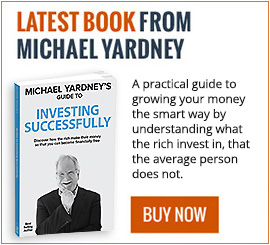Over two years ago I wrote this blog which espoused the benefits of passive investing.
According to Morningstar, in the 2016 calendar year, $340 billion flowed out (net) of active funds management in the US. 
By comparison, over the same period, $500 billion flowed into passive funds (net).
This overwhelmingly demonstrates that investors are voting with their feet – at least in the US anyway.
The transition away from active funds management towards passive management is gaining more momentum with each year that passes (for the reasons I discussed in this blog).
Given that passive investing is becoming increasingly popular, I thought it was timely to provide an update on the advances that have occurred in this marketplace.
A quick refresh
Broadly speaking there are two methodologies that fund managers use to invest your money including your super.
The first methodology is active funds management.
Active funds management is probably what you’re most familiar with and involves you paying professional fund managers that buy and sell stocks in order to generate an investment return.
The aim for most active fund managers is to beat the market.
The second methodology is passive funds management.
Passive funds management uses a rules-based approach to determine how and where to invest your monies.
For example, an Australian index fund might invest in stocks in line with the ASX 200 index.
This means that if CBA’s market value is equal to 8% of the total market value of the ASX 200 index, then 8% of your monies are invested in CBA.
The main advantages that passive investing offers includes:
1) significantly lower fees and
2) superior investment returns over the long run.
Investment returns: passive versus active
Index provider, S&P Dow Jones Indices provides one of the most comprehensive databases which compares active and passive fund manager returns.
You can access its SPIVA report by clicking here. 
A review of its findings highlights that less than 12% of active fund managers have beaten the index over the last five years in the US.
Australian active fund managers did slightly better.
Over the last five years just over 30% of active fund managers beat the index.
That is not good performance considering that active fund managers charge significantly higher fees (typically between 3 and 10 times higher fees than passive fund managers).
The US market achieved an average return of approximately 11% p.a. over this period compared to 6% p.a. for the Aussie market.
So, it seems that active fund managers do better in flatter markets (and worse in a rising market).
And if you are “lucky” enough to pick a winner, they won’t be for very long
If you do happen to find an actively managed fund that has outperformed the market (and their fees), research suggests that the “outperformance” won’t persist for very long.
Recent research published in June 2017, demonstrated that of the fund managers that were in the top quartile as of March 2015 (performance wise), only 1.94% managed to stay in the top quartile at the end of March 2017.
That is, a tiny number of funds can consistently stay at the top.
So, the challenge becomes; each year you have to try and pick which funds will perform in the top quartile.
As Jack Bogle says “Don’t look for the needle in the haystack. Just buy the haystack!” (i.e. index).
Advancements in passive investing
Just like in any other industry, as the passive investing industry matures, new and improved products emerge. 
There are multiple passive investing methodologies. We draw upon three different passive investing methodologies to assist in managing our clients’ monies.
Each of these methodologies have their pros and cons – so I believe it’s important to diversify by using all three of them.
It is important to note that these are all low-cost, rules-based approaches – no subjective investment decisions here.
I discuss each of these below.
Traditional indexing:
traditional indexing invests according to a market capitalisation weighting (like the CBA example above). Vanguard is the largest traditional index provider in the world.
It was founded in the mid-1970s, is a not-for-profit business (so its fees have reduced over time) and only uses the traditional indexing approach.
One of the criticisms of this approach is the traditional index funds have to buy and sell certain stocks just because their price may have changed.
For example, in March 2015, CBA’s share price climbed to over $96. By late 2016, CBA’s share price had dropped to circa $70.
Therefore, a traditional index funds would have had to sell down their CBA exposure between March 2015 to late 2016.
However, if you held direct shares in CBA as a long-term investor, I doubt that you would have made any changes to your holdings over this time.
Fundamental indexing:
instead of using a market capitalisation weighting, fundamental indexing uses an average of four non-price measures to determine a company’s fundamental value.
The company’s fundamental value is then compared to the aggregate fundamental value of the total index. 
Funds are then invested according to this proportion.
US firm, Research Affiliates developed the fundamental indexing philosophy.
The four fundamentals include sales, book value, dividends, and cash flow.
These four criteria have equal weighting.
Therefore, using the above CBA example, if CBA’s fundamental value did not change between March 2015 to late 2016, then a fundamental index fund would not have changed its investment holding in CBA. This arguably achieves improved efficiency.
Click here for more information about fundamental indexing.
Academic indexing:
this is another methodology that a fund manager called Dimensional uses exclusively.
Put simply, this methodology begins by using what they call the “investable universe” (say the ASX200 i.e. the top 200 companies) and then using statistical and objective filters to identify the stocks that they don’t want to invest in.
In addition to this, it uses quantitative methods that are grounded in economic theory and backed by decades of empirical research to identify value stocks (using book versus market value measures).
If you have a spare few hours (!) here is an article by an advisor in Perth that explains the Dimensional approach in detail.
Don’t forget your super
I would suggest that all Australians should be interested in the active versus passive debate.
We all have monies invested in Australian and international stock markets. 
In my view, the Australian superannuation industry has been very slow at providing superannuation investors with low-cost passive investment options.
Only two industry super funds (namely AustralianSuper and sunsuper) in Australia offer members 100% passive investment options.
That said, these are very basic options and only use traditional indexing.
We have helped our clients invest their super more astutely (than the industry fund options) so that they’re well-positioned to capture investment returns using the passive approach whilst still minimising fees.
Staying on top of these new approaches
Australia is lagging the US in its adoption of passive investing.
However, this is predicted to rapidly change in the near future.
When this change occurs, undoubtedly it will create more investment options for all Australians.
Also, it is very important to keep a close eye on the existing passive investing methodologies to ensure they perform as expected.
Taking this into account, passive investing isn’t as ‘set and forget’ as it might first appear.
It’s important that you consult an independent advisor before you make any changes to your current investments, including super.
Warning against trying to do this all by yourself
Sometimes the simplicity of passive investing incorrectly entices investors to believe they can do it all themselves. 
Whilst passive investing can be simple to understand, it is very important that it’s executed correctly.
I’m not trying to convince you that it’s more complex than it really is.
My point is that, in my experience, very few novice investors implement a passive investing approach correctly.
There’s just too much money at risk to make a mistake, so please seek independent advice.
More information
I have provided various links underneath this article to assist you in researching this topic further (if you wish).
However, if you would like some independent financial advice on whether adopting a passive investment approach is right for you, please do not hesitate to reach out to us.
from Property UpdateProperty Update https://propertyupdate.com.au/passive-investing-involves-more-than-just-buying-an-index-fund/

No comments:
Post a Comment